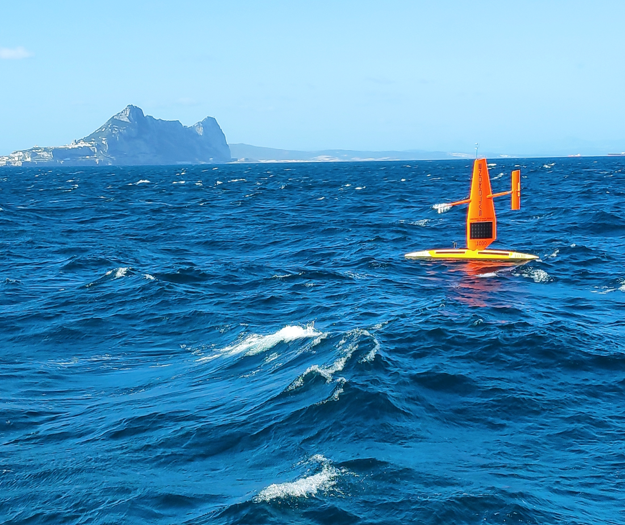Contribution of the University of Cádiz to the Saildrone mission: Crossing the Strait of Gibraltar 6 March 2020
The mission
The first unmanned crossing of the Strait of Gibraltar by remotely controlled vehicles took place the last 6 March. It was two robotic “Saildrone” sailboats, in what was perhaps the most complicated stage of their ATL2MED mission. The “Saildrones” are shaped like a 7-metre windsurfing board, propelled by the wind through a rigid sail and carrying solar-powered oceanographic and meteorological sensors (https://www.saildrone.com/technology).

Remotely controlled unmanned vehicle “Saildrone” during its passage through the Strait of Gibraltar.
The ATL2MED mission is a coordinated initiative in which, in addition to the “Saildrones”, different European oceanographic institutions are participating. Its objective is to take measurements of marine CO2 using a new sensor developed by the NASA along a route between Cabo Verde and Trieste (3200 miles) and its intercalibration with the CO2 measurements from mooring linesin Spain, France and Italy integrated in ICOS (Integrated Carbon Observation System) (more information at https://www.saildrone.com/mission/atl2med).
UCADIZ
PLOCAN, as the institution responsible of the transit of “Saildrones” in Spanish Atlantic waters, contacted the Naval Hydrographic Institute, SASEMAR and the University of Cadiz (UCA) to organise the passage through the Strait of Gibraltar, which is extremely complex due to strong currents, intense wind events and high density of maritime traffic. Here the fundamental value of the University Oceanographic Vessel UCADIZ was demonstrated, as the only one available in the region with sufficient technological capacity to escort the “Saildrones” in this challenge. The relationship between PLOCAN and the Southwest Coastal Environmental Observatory (OCASO), a cross-border initiative coordinated by the Physical Oceanography group of the UCA (RNM-205) and the willingness of the Central Services of Nautical Resources and Infrastructures (SCRIN) of the UCA paved the way for this necessary cooperation activity.
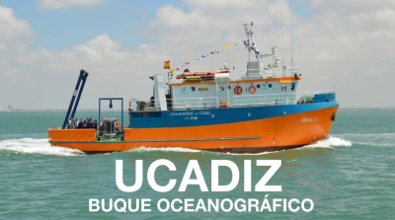
The passage
After several delays caused by unfavourable winds and incidents in the voyage of the “Saildrones”, the crossing of the Strait of Gibraltar was scheduled on 6 March. The day before, the UCADIZ travelled from its base in Puntales to the port of Barbate, with the aim of arriving punctually at the meeting point at 8:00 (GMT+1) in the morning, at a point located a couple of miles to the west of the Bajo de Camarinal. The idea was to take advantage of the daylight to make the crossing of the Strait. However, the forecasts for the current velocity at the Camarinal Sill were not favourable, as predicted by OCASO’s numerical models (https://ocaso.puertos.es): despite the westerly wind that favoured the crossing, the tide had the last word. Camarinal Sill is known to be the only place in the Strait where the tide is strong enough to reverse the eastward surface flow of Atlantic water. This occurs simultaneously with a pronounced rise in the interface separating the Atlantic inflow(and Mediterranean outflow, causing an internal wave that is “arrested” at the lee side of the sill and is characterised by intense vertical movements that manifest themselves on the surface as a band of agitation known by the sailors and navigators as “boiling waters”. When the ebb tide becomes weaker, this internal wave is released and propagates towards the Mediterranean, re-establishing the dominant inflow. Indeed, the “Saildrones” were trapped at the Camarinal sill until 12:30. Thereafter, driven by a favourable current of up to 4 knots and by the westerly wind, they were able to sail at speeds of up to 8 knots through the Spanish coastal navigation zone, escorted by the UCADIZ, avoiding the congestion of the navigation system and recovering a large part of the accumulated delay.
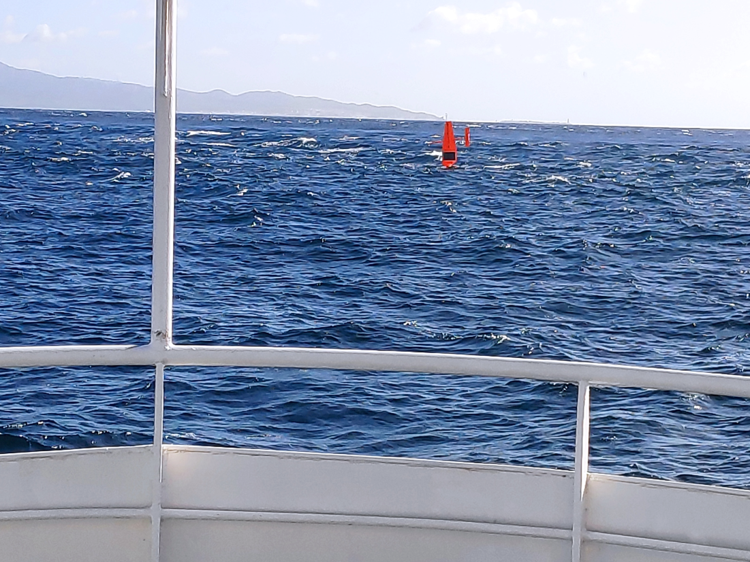
One of the “Saildrones” during its passage through the Camarinal Sill.
The second critical moment of the passage through the strait was the crossing of the Bay of Algeciras, where the density of maritime traffic increases and most of the ships, entering or leaving the ports of Algeciras and Gibraltar, were on an intersection course with the “Saildrones”, whose manoeuvrability is limited by virtue of their wind propulsion.

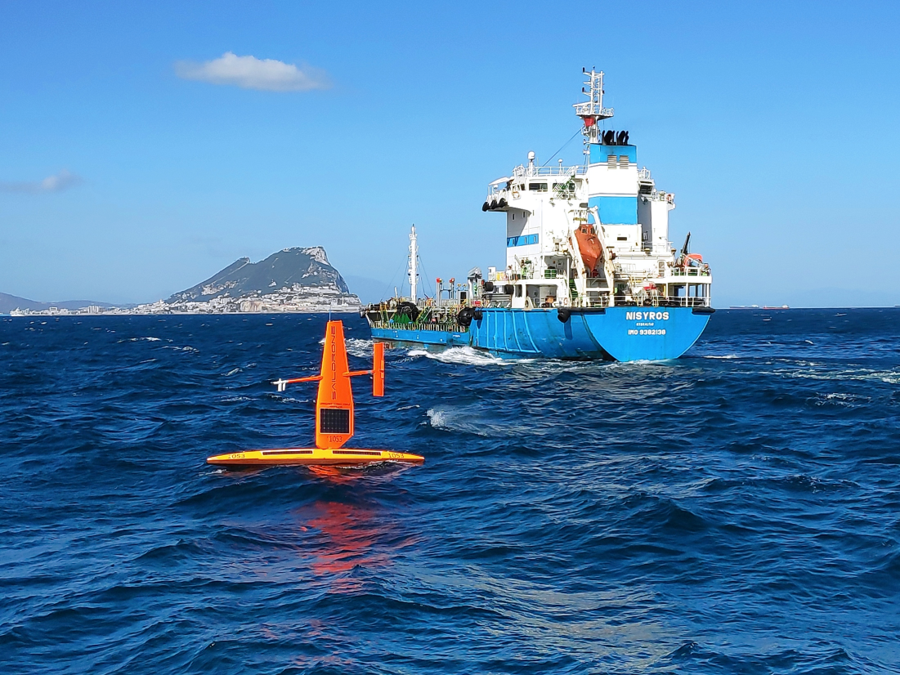
Images showing the danger that the “Saildrones” faced due to the maritime traffic at the crossing of the Bay of Algeciras.
The coordination between the remote pilots (somewhere in California) and the bridge of the UCADIZ, who radioed several ships to request a change of course, was critical in getting the “Saildrones” safely into the relative calm of the Alboran Sea. It was already 6pm when the UCADIZ said goodbye to the “Saildrones” and headed for Algeciras to enjoy a well-deserved rest.
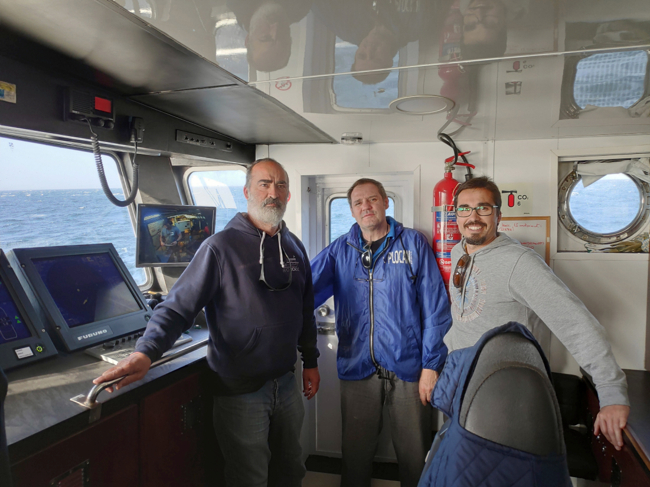
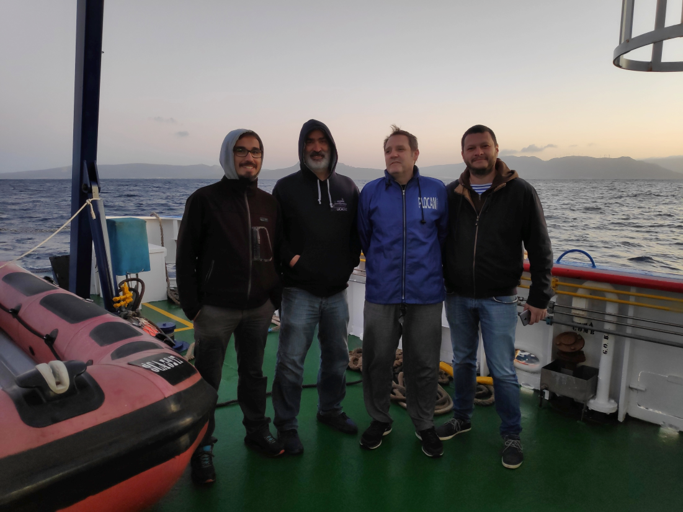
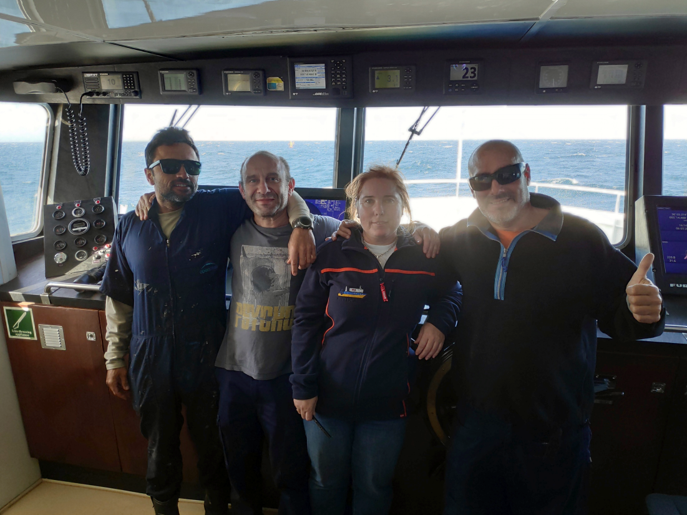
Images taken from the team that made the mission a success.


